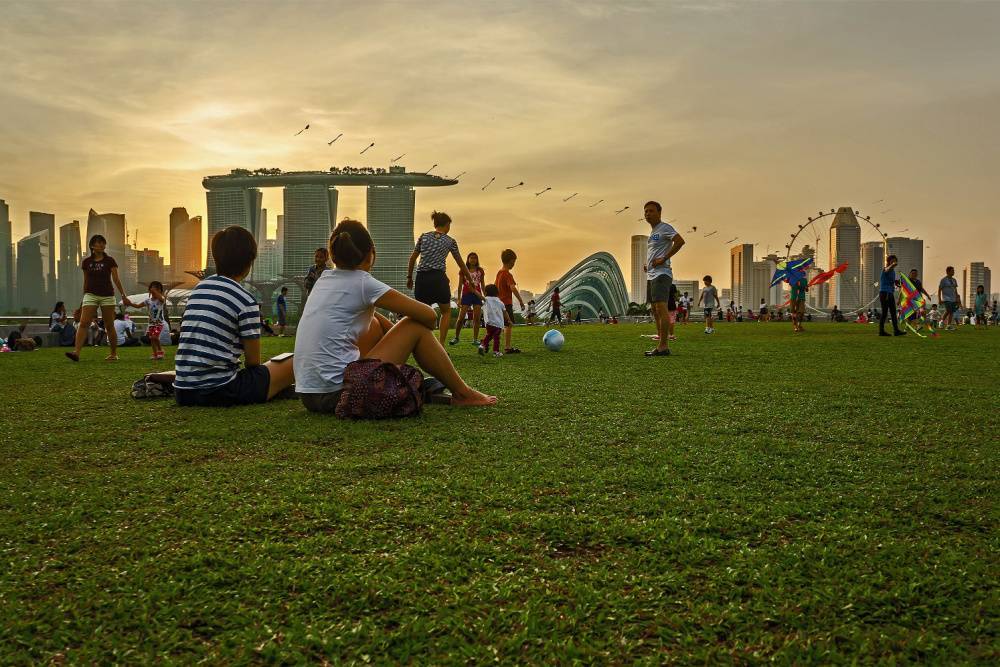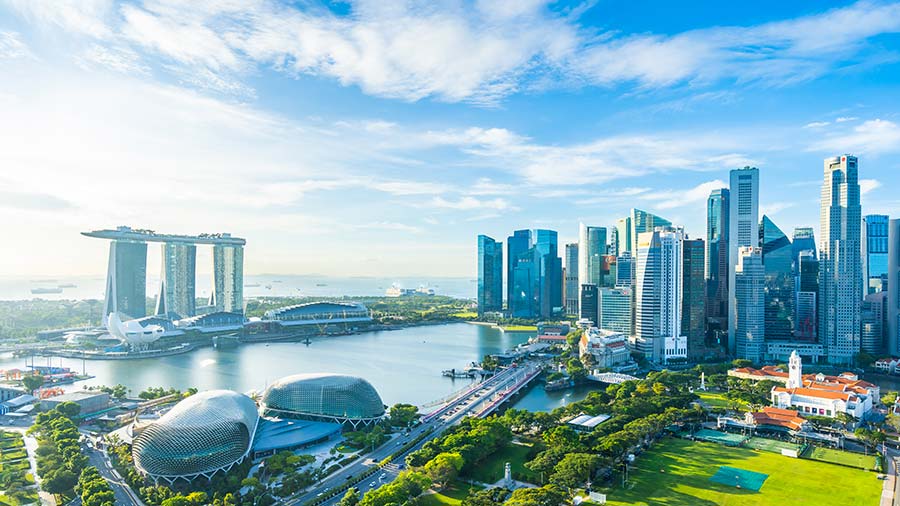Amazingly, it’s not culture or diet that have propelled Singapore to being named to the world’s very short and exclusive list of ‘Blue Zones’ – it’s a matter of policy.
For years, every time I’ve visited Singapore, I just feel healthier. It’s not a mystery why, either: Armed with my handy little EZLink card, I use only two modes of transportation almost exclusively: the city’s outrageously good MRT network, and my own feet. In Singapore, walking (and walking a lot) is all but unavoidable. And that focus on movement is just one of the things that has made Singaporeans’ life expectancy jump significantly since the nation’s independence barely over half a century ago.
In fact, according to recent reports by BBC, South China Morning Post, and CNBC, when it comes to longevity, few places have seen as dramatic a rise in life expectancy as the island city-state of Singapore.
In just a handful of generations, the average life expectancy in Malaysia’s southern neighbour has jumped from 65 for those born in 1960 to over 86 for babies born today. Now recognised as the world’s sixth Blue Zone, Singapore offers a fascinating case study in longevity that, rather than something that’s come around naturally, has actually been engineered and driven by government policy.

WHAT ARE BLUE ZONES?
The term “Blue Zones” originated from National Geographic journalist Dan Buettner, who identified five regions with exceptionally high life expectancies: Okinawa (Japan), Ikaria (Greece), Sardinia (Italy), Nicoya (Costa Rica), and Loma Linda (USA). The people in these regions share common practices, such as close family ties, plant-based diets, and daily physical activity, that contribute to long, healthy lives.

With its focus on forward-thinking policies rather than centuries-old traditions, Singapore was designated as a “Blue Zone 2.0” in 2023 – the first addition to the very short list in decades. From government policies to community lifestyle, Singapore’s efforts to promote wellness have positioned it as a model for other urban centres aiming to improve public health and quality of life.
Buettner and his team identified nine essential habits, the “Power 9,” from communities with the highest longevity rates worldwide. These principles include moving naturally, having purpose, stress relief routines, eating moderately (stopping at 80% full), prioritising plant-based diets, moderate alcohol consumption, nurturing community ties, keeping loved ones close, and surrounding oneself with healthy influences.

As Buettner described, Singapore stands out as an “engineered longevity hotspot,” where intentional policies support healthy living. What are those polices? Here are just a few:
Singapore’s urban planning discourages car reliance through high taxes on vehicles and petrol, making walking and public transportation the norm – an approach that seamlessly incorporates movement – and often quite a bit of it – into residents’ daily routines.
Family and community bonds are also reinforced through policies like the Proximity Housing Grant, which incentivises families to live close together. This not only keeps older family members engaged and cared for but also fosters multi-generational support. Faith also plays a key role, with nearly 80% of Singaporeans identifying with a faith-based community, which Buettner’s research suggests may add years to life expectancy.
Singapore has championed healthier lifestyles by promoting whole grains and nutritious foods and providing incentives for food vendors to offer healthy choices.

Singapore’s universal healthcare, designed with health rather than profit in mind, ensures that residents can access quality care across preventive, rehabilitative, and palliative services. This approach to healthcare, inspired by visionary leaders like founding Prime Minister Lee Kuan Yew, reflects a prioritisation of residents’ well-being over economic gain – a foundational value that sets Singapore’s longevity efforts apart from many others.
A HEALTHY TRANSFORMATION THROUGH POLICY
In Singapore, the government’s initiatives to support health and wellness are tangible, and residents have felt the impact. Firdaus Syazwani, a local resident and founder of the financial blog Dollar Bureau, notes, “Having grown up here, I’ve seen firsthand the transformation in community health consciousness.” The government’s approach includes high taxes on cigarettes and alcohol and a strict smoking ban in public spaces. “These efforts don’t just improve individual health,” Syazwani explains, “they make public areas more enjoyable and cleaner for everyone.”
Singapore’s Health Promotion Board is tackling the sugary, high-calorie dishes popular in local cuisine with initiatives like mandatory nutritional labelling and reduced sugar content in drinks. Though these measures are still in the early stages, Syazwani says they’re already making a difference. “When I see these labels, I think twice about sugary drinks,” he says, acknowledging the initiative’s role in guiding healthier choices.
QUALITY HEALTHCARE, GREEN SPACES, AND COMMUNITY FOCUS
Singapore’s healthcare system is globally respected for its quality and affordability. The 2023 Legatum Prosperity Index ranked Singapore as the best country for health outcomes and healthcare access. The system provides universal coverage, complemented by private options and savings funds to help manage out-of-pocket expenses, ensuring all residents have quality care.

However, the government’s focus on longevity extends beyond healthcare to urban planning. “The integration of parks, gardens, and green spaces is essential in keeping Singapore beautiful and calming,” explains Charu Kokate, a senior partner at Safdie Architects and project lead for the Sky Habitat Residential Towers and Jewel Changi Airport. Kokate adds, “The Urban Redevelopment Authority’s planning is a model of sustainability and efficient land use, blending nature into urban life.” With lush parks like the UNESCO-listed Singapore Botanic Gardens, Singapore’s green spaces offer respite and recreation, promoting daily activity and reducing stress – both essential factors in long-term health.
EMBRACING LONGEVITY WITH A HEALTHY LIFESTYLE
The vibrant public parks, including East Coast Park, provide scenic spots for exercise and relaxation, creating community hubs that longevity experts agree are crucial to quality of life. Syazwani recommends East Coast Park, which has wide stretches for walking and picnicking by the sea, as an ideal spot for newcomers to connect with local culture and lifestyle.

Singapore’s strong community spirit is echoed in its policies on social cohesion. Despite the high cost of living – Mercer ranks it as the second-most expensive city globally after Hong Kong – the quality of life is high. The government’s emphasis on social order through strict laws on littering, smoking, and other behaviours is well-received by many, who find the structure makes Singapore safer and more beautiful.
“Singapore’s stability supports both economic growth and community harmony,” says Kokate. The city’s celebration of diversity through festivals and a thriving food scene gives it a unique vibrancy that appeals to locals and expats alike. “The multicultural society creates a rich, welcoming environment that enriches life for everyone here,” she adds.
Singapore’s inclusion as a new Blue Zone marks a notable achievement, recognising how strategic policy and community focus have shaped a world where residents not only live longer but enjoy a high quality of life.

Reporting from Blue Zones, CNBC, BBC, Tomorrow City, and South China Morning Post contributed to this article. To learn more, visit https://www.bluezones.com/2023/10/the-worlds-6th-blue-zones-region.
"ExpatGo welcomes and encourages comments, input, and divergent opinions. However, we kindly request that you use suitable language in your comments, and refrain from any sort of personal attack, hate speech, or disparaging rhetoric. Comments not in line with this are subject to removal from the site. "





















